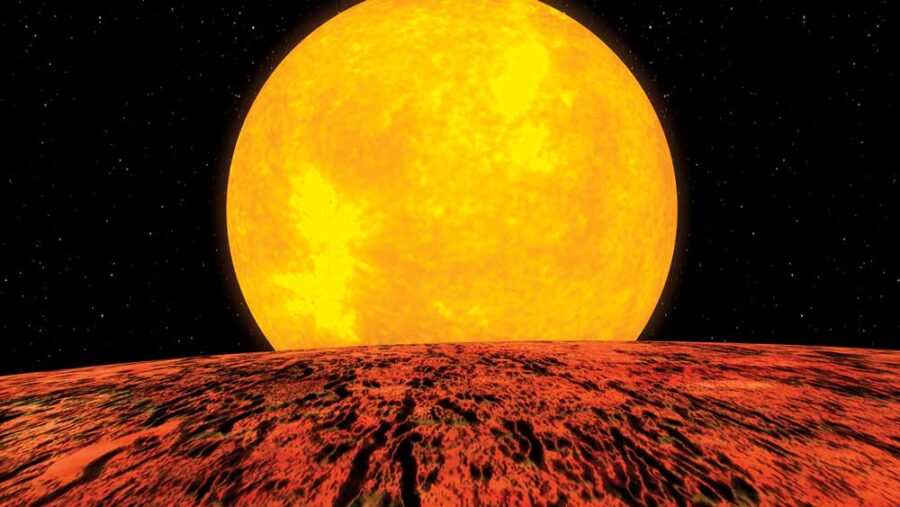The Kepler spacecraft continues to reap a harvest of new planet discoveries.

The Kepler science team recently made two impressive announcements that give us reason to anticipate more from this wonderful spacecraft as it steadily reveals our galaxy’s diversity of planets.
The first is Kepler-11, a bizarre system with 6 planets huddled so close to their Sun-like star that they would all fit inside the orbit of Venus. Thanks to some reliable physics and clever analysis, we know much more about these six new worlds. As they orbit, they gravitationally jostle, like roller-derby skaters pushing and pulling one another ahead or behind, causing subtle changes in orbital timing that reveals the mass of each planet.
With their small distances from the star, these worlds must be smoking hot. Size and mass yields density, which narrows the range of possible compositions. They are all surprisingly light for their sizes, their low densities revealing puffed-out atmospheres. These sizzling, fluffy atmospheres must be furiously losing gas to space. Why are they still there at all? For those trying to understand the evolution of planetary atmospheres, this is juicy stuff.
We can only deduce this information because these planets all orbit in our line of sight. The large majority of randomly oriented systems will not display themselves so conveniently for our interstellar voyeurism. Did we just get lucky? In a sense, yes, except that Kepler is designed to make its own luck. It monitors enough stars (156,000) so that the small percentage of planetary systems that would be randomly oriented in our direction will add up, if planets are reasonably commonplace, to a decent demographic slice. This scheme is paying off in droves of new discoveries, slowly revealing the planetary demographics of our galaxy.
The Kepler strategy of calculated luck is also reflected in the announcement of 1,235 candidate planets discovered during the first 4 months of science operations, including a handful that are roughly Earth-sized and zoned for liquid water. This is not the same as announcing planet discoveries. The Kepler method is sure to produce false positives. A star appearing close to another star might be varying in brightness, or a multiple-star system could mimic a planet discovery. Each candidate must be verified with repeat observations and, where possible, other instruments and methods.
In science we frequently have a tension about when to release an important result. Should you wait until you’re certain, or should you spill the beans when it seems fairly promising? There are risks either way. Often there is no magic moment, and with Kepler the process of discovery is stretched out over years.
I’m thrilled that the Kepler team decided to announce the statistics of candidates. Most will turn out to be actual new worlds. Sharing your data when it’s still at this stage of immaturity assumes some maturity among the public. It requires an understanding of probability and uncertainty. This is a crucial part of the mathematical and scientific literacy needed to understand some urgent current issues. So much of the brouhaha over climate change, for example, comes from misunderstanding or misrepresenting of scientific uncertainty. So I applaud the Kepler team for releasing these candidates and expecting people to understand that it will take time to know which ones are really planets. It’s a tease — a respectful tease.
This article originally appeared in print in the June 2011 issue of Sky & Telescope. Subscribe to Sky & Telescope.
 0
0
Comments
You must be logged in to post a comment.